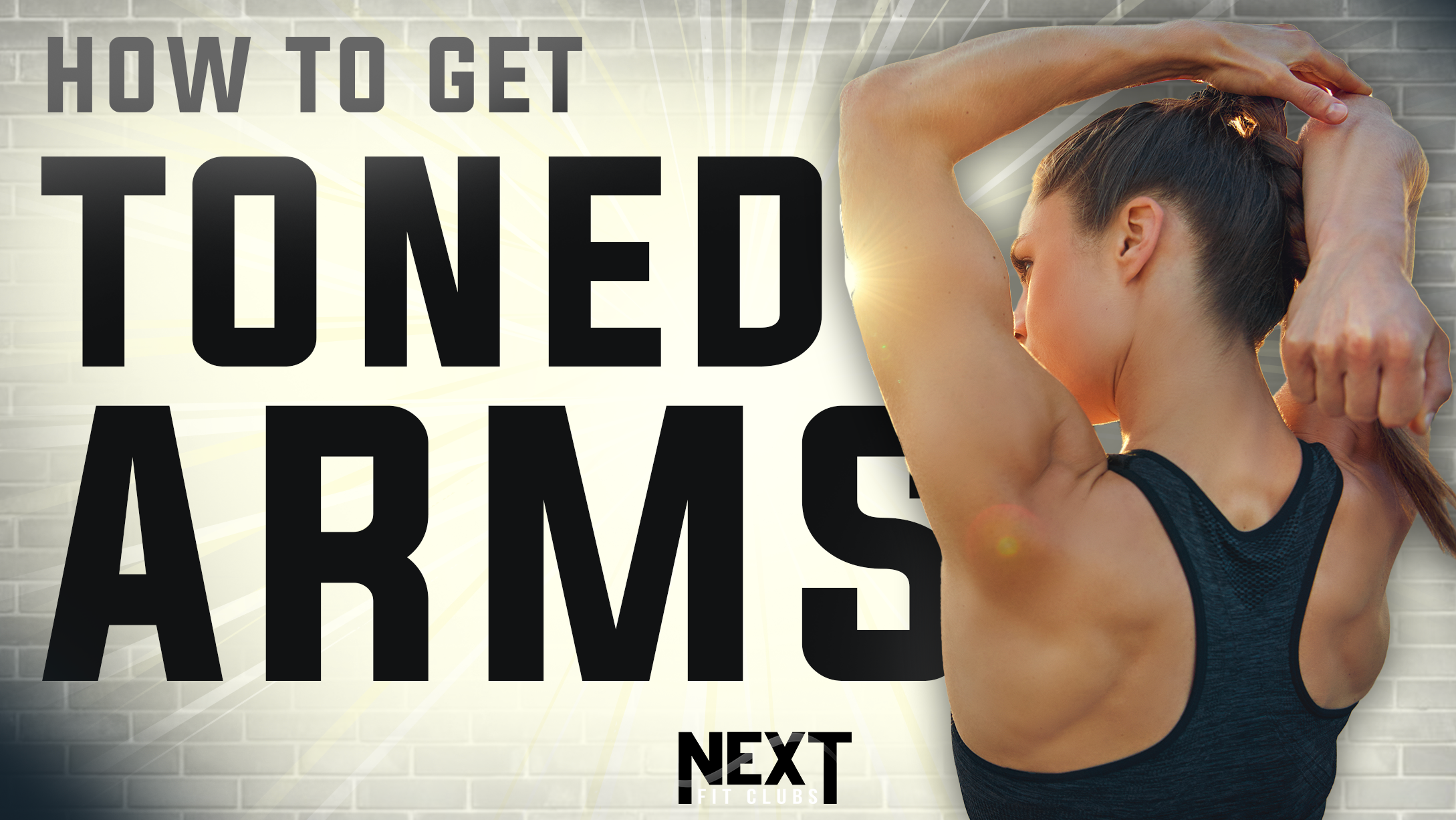Addressing the Misconceptions
The title of this post is intentionally misleading. While there are exercises that challenge the bicep muscles, tricep muscles, shoulder muscles and will build mass in these areas, there is not a magic upper body movement thatâs going to take your arms from thin to muscular.
Additionally, the concept of âtoningâ boils down to building muscle mass with upper body exercises and having that muscle mass become more visible by decreasing body fat, or increasing calories (depending on the individual). For todayâs blog post, weâll focus on the exercising portion of this ârecipeâ.
How to Actually Build Muscle in ArmsÂ
There are a few factors to consider with this goal. 1- Exercise selection. 2- Intensity. 3- Volume 4- Frequency. There is also the foundational principle of progressive overload.
Exercise Selection
The goal here is to choose movements that place mechanical tension on the targeted muscles. For the biceps, one of the most appropriate movements is the biceps curl. There are many variations on the curl, from changing the hand grip to palms facing each other (hammer curl), to changing the tempo and performing a slow negative, to performing the curls on an incline bench to change the strength curve and where the movement is most challenging, to using an EZ bar, cables, or regular barbell as opposed to dumbbells. While curls target the biceps, movements like the chin-up/pull-up, db/barbell bench press also challenge the biceps albeit less directly.
For Triceps, there are a few âbread and butterâ movements to consider including, such as db skull crushers, overhead db triceps extension, rope cable extension and assisted/bodyweight/weighted dips. This list is not exhaustive.
Exercises to increase Shoulder mass include standing or bench supported Db/cable lateral raises with arms slightly out in front of you, bench supported Y-Raises, standing/seated db shoulder press, barbell strict press, and cable/db row for rear delts. In all of these movements you can add in Πrep or manipulate the tempo to increase time under tension.
IntensityÂ
Intensity means how challenging the movement is. A helpful way of thinking about intensity is âRatings of Perceived Exertionâ or RPE, which is a scale of 1-10 that allows the client to self-rate how hard he/she/they is working. For example, RPE 8 means that youâre working with a weight thatâs pretty challenging, but not impossible to complete the prescribed reps. Generally, staying between RPE 7-10 (failure) is ideal for muscle building, with failure not occurring often. If your training is periodized in 4 week blocks, by week four youâd want to be performing bicep curls for 8-10 reps at RPE 9 versus week one when maybe you were performing those reps at RPE 7.
Frequency and Volume
So how much is enough? Well that is highly independent to the individual. If you currently train in a total body style, then each workout could include 2-3 exercises for your arms. Some who are more advanced who train in a body part split style, meaning a whole training session is devoted to biceps and triceps and then those muscle groups are trained once per week, for example. What tends to vary less individual to individual is the sets and rep ranges (the volume). For building muscle 6-12 repetitions of an exercise for 3-6 sets is considered to be the sweet spot. Rest periods of 30 seconds to 1.5minutes between sets is recommended for adequate recovery.
Progressive Overload
Progressive overload means over time, more reps/sets are completed with heavier weights. That means using 8lb dumbbells for bicep curls for the next six months is not going to build your dream arms. This is because the body is smart and will only adapt if itâs forced to. Imposing a heavier stimulus on the body than what it was previously capable of forces the body to adapt to handle the new, heavier stimulus. This adaptation is muscle protein synthesis, aka skeletal muscle mass.
This doesnât mean every session you must use heavier weights than last session. Nor does it mean that youâll be able to linearly progress for years without fail. One way to look at it is, letâs say you did three sets of 12 bicep curls with 15lb dumbbells one session. The next session, the goal could be to do one set with 17.5lb dumbbells, or do the first six reps of the first set with the heavier dumbbells.
Building muscle takes time. Regardless of the individualized nutrition protocol, choosing the right tools, at the right time, in the right amounts, for the job will build your dream arms. If you have questions, reach out to the coaches at Next!
-Coach Caroline





0 Comments